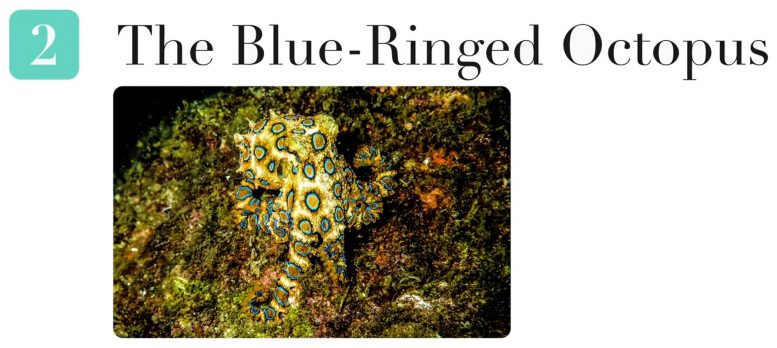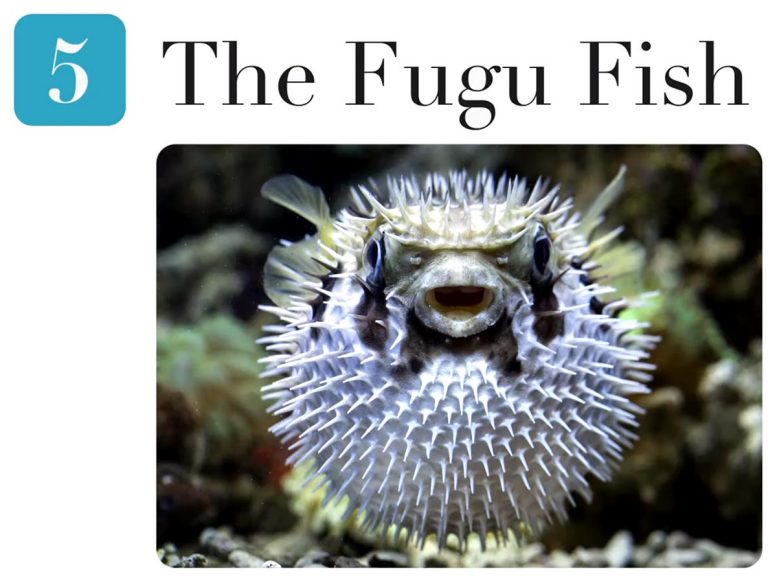Don’t let their cuteness fool you – these animals are not to be messed with. This week Reactions breaks down the chemistry behind what makes these adorable critters deadly.
SAM: Box jellies can really ruin your day, possibly…end your life.
ANDREW: Box jellyfish are not cute.
SAM: Andrew!
They are cute, they’re very cute.
If looks could kill, at least these are really cute looks. One of these five adorable animals might be the last thing you ever see.

1. The Slow Loris
Very few mammals are known to be venomous—the slow loris is one of them.
Toxins from one Indonesian species of slow loris come from a gland on the surface of the slow loris’ arm that they use to chemically communicate with potential mates.
MUSIC: This slow loris, is gonna take it slow.
Scientists believe that this sexual gland secretion could also be helpful for keeping parasites at bay, as well as predators who can smell it. When slow lorises groom themselves, they lick that gland, so if they happen to bite you, those toxins will come with their saliva… which could be toxic on its own.
The bite of a slow loris can kill you by giving you a terrible allergy attack, throwing you into anaphylactic shock. In other words, your immune system, when reacting to the toxins, releases a bunch of chemicals that make your blood pressure drop suddenly and cause your airways to narrow. You might feel like you’re suffocating.
A big shot of adrenaline, like from an EpiPen, can be used to stop that scary allergic response, but EpiPens just keep you alive in that moment—you need to go to the ER immediately because chances are, once the adrenaline wears off, you could go into anaphylactic shock again.
Slow loris sexual gland secretion isn’t very well understood. So what do we know?
It appears to be a chemical concoction of over 200 compounds. One of these compounds is very similar to the allergen in cat dander, but way more powerful. That could be because of chemicals from the sexual gland alone, or because those chemicals mix, or react with others in slow loris saliva. That’s a puzzle scientists are trying to solve.

2. The Blue-Ringed Octopus
This greater blue-ringed octopus, found here.. can deliver a bite that’s fatal to humans… although it happens VERY rarely.
Its molecule of death is tetrodotoxin, a potent nerve toxin, found in this cute little octopus’s salivary glands, which are connected to its beak. Tetrodotoxin works by blocking the activity of sodium channels in your nerve cells. First, this will cause numbness around the bite, then paralysis, then heart failure. When tetrodotoxin binds to a sodium channel it prevents sodium ions from moving through the channel, which stops nerve cells from sending chemical messages to your brain like “body, move!” and “heart, keep pumping blood!”
Maybe the eeriest part of the whole thing is that a victim can be fully aware of their surroundings but unable to breathe or signal that they can’t breathe – because they’re paralyzed.
Unfortunately, there is no antitoxin, so the standard treatment is to hook a victim up to a ventilator and monitor their heart rate until the toxin naturally makes its way out of their system. Victims who live through the first 24 hours often make a complete recovery.
What’s interesting about the greater blue-ringed octopus’s tetrodotoxin is that the octopus isn’t making it itself. Many researchers believe that bacteria living in octopuses’ salivary glands produce the toxin.
Sounds kinda dangerous for the blue-ringed octopus itself, right?
It actually isn’t a problem – researchers have found that its own sodium channels have amino acid changes that most likely prevent tetrodotoxin from binding, which protects the octopus. And that adaptation seems to also be the case for a bunch of other tetrodotoxin-harboring creatures.

3. The Duck-Billed Platypus
The duck-billed platypus is another venom-producing mammal, but doesn’t get much attention because you probably won’t ever see one. These cuties found here have venom that can be lethal, but there are no recorded cases of them killing humans.
Duck-billed platypi have venom glands connected to a spur on each of their hind legs. Yep, a spur – it kinda looks like a really scary claw. And you’ll only find these spurs on males.
Male platypuses make more venom during the breeding season, which researchers think helps them defend their territory and compete for females. The platypus wraps its hind legs around its victim, driving in its sharp spurs, and releases venom, temporarily paralyzing another male platypus in the wild. In captivity, where a platypus can’t escape attacks as easily, this can be deadly.
If a human is stung, that area will swell and they’ll experience a lot of pain – pain so bad that even morphine won’t relieve it.
Scientists haven’t figured out all the toxins in duck-billed platypus venom, but we do know that some increase signaling in neurons that tell your brain you’re feeling pain. Which causes you to feel…pain.
So if you find yourself in a fight with a duck-billed platypus, stay away from those hind legs.

4. The Box Jellyfish
Box jellies can really ruin your day – possibly…
ANDREW: Box jellyfish are not cute.
SAM: ANDREW! They are cute, they’re very cute.
Box jellies can really ruin your day, and possibly end your life. At this point they’ve killed hundreds of people.
The most dangerous of the box jellies, which lives here, produces a potent, fast-acting venom that it uses for defense and to catch prey.
A sting from this jelly, at best, will give you an incredibly painful welt. In fatal cases, people stung die from heart failure, and that can happen within minutes.
The box jelly’s venom is stored and released by microscopic capsules in its tentacles called nematocysts, but chemists still don’t totally understand what in that venom kills you. That being said, they’ve found that it contains a bunch of proteins that cause extreme pain, inflammation and…can make your cells rupture or split open.
So you’ll not only experience swelling where you’ve been stung, but your skin cells in that area will begin to slough off as they die. Don’t Google this, it looks rough.
The good news: there’s technically an antivenom. You can make it in different ways, but the first step is always to milk a box jellyfish, which looks like this.
Wrong clip Andrew.
It looks like this.
[sigh] Whatever.
Once you’ve got the venom, you inject it into an animal, then collect the antibodies that pop up when that animal’s immune system responds.
Unfortunately… the antivenom doesn’t always work. Part of that may be because it can’t be administered quickly enough, but it’s also hard to create an effective antivenom if you don’t understand what’s actually in the venom to begin with.
So, scientists are trying to use gene sequencing to identify some of the proteins in the venom that might be responsible for killing people, and then create a more specific antivenom that will – fingers crossed – save lives.

5. The Fugu Fish
Fugu fish are toxic pufferfish, found here, in these genera. They have tetrodotoxin in their system, just like our buddy the blue-ringed octopus. You’ll find it in their intestines, ovaries, and liver.
It’s interesting that two of the deadliest creatures out there actually use the same poison. Now we just need to develop an antitoxin and kill two birds with one stone or…prevent those birds from killing us?
Anyway, tetrodotoxin is actually named after the family of pufferfish it was first isolated from in the early 1900s. Within a minute of eating poisonous meat, you’d feel numbness and tingling in your mouth and begin to get nauseous. A tiny drop of poison can cause paralysis, loss of consciousness, and ultimately death…in dozens of people.
Fugu fish is considered a delicacy – sometimes costing close to $200 per dish – and the dangerous thrill of eating it – along with the training required by chefs who want to serve it – are the main reasons it costs so much.
Tetrodotoxin in fugu is still responsible for multiple deaths every year in Japan. Restaurant preparation of fugu is strictly controlled and, like I mentioned, chefs are required to have specific qualifications and years of training to prepare it.
But tetrodotoxin might not be all bad: There’s now research looking at its potential use – at very, very small doses – in pain relief. Part of what makes it appealing as a pain reliever is that it’s not an opioid. Opioids like morphine are commonly used for pain relief but they’re notoriously addictive.
So, there you have it – nature’s ultimate reminder to not judge a book by its cover. Even if that book is very cute, it could kill you.









Be the first to comment on "Five Adorable Animals That Can Kill You [Video]"